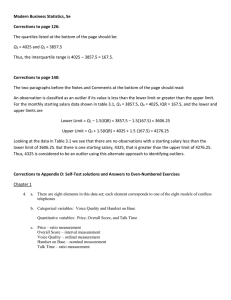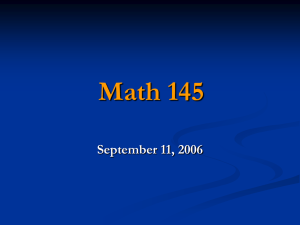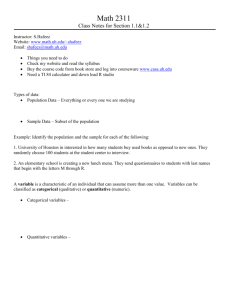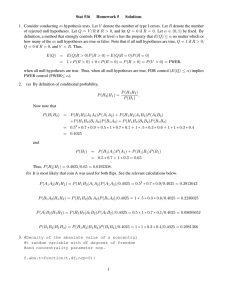1285433300_504963
advertisement
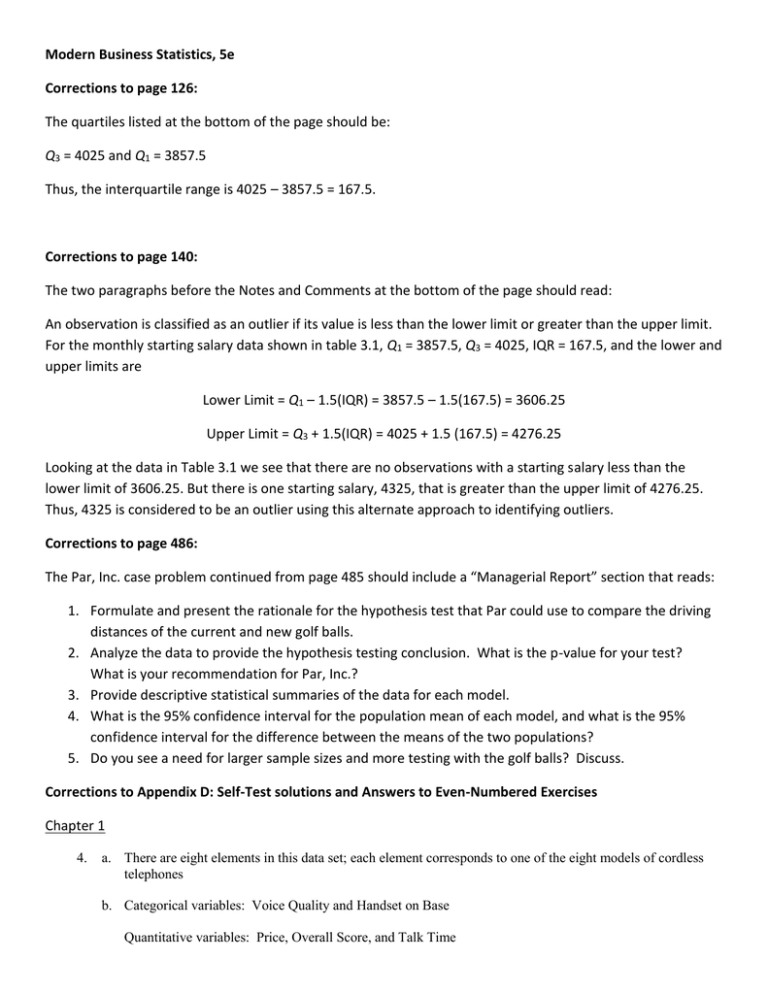
Modern Business Statistics, 5e Corrections to page 126: The quartiles listed at the bottom of the page should be: Q3 = 4025 and Q1 = 3857.5 Thus, the interquartile range is 4025 – 3857.5 = 167.5. Corrections to page 140: The two paragraphs before the Notes and Comments at the bottom of the page should read: An observation is classified as an outlier if its value is less than the lower limit or greater than the upper limit. For the monthly starting salary data shown in table 3.1, Q1 = 3857.5, Q3 = 4025, IQR = 167.5, and the lower and upper limits are Lower Limit = Q1 – 1.5(IQR) = 3857.5 – 1.5(167.5) = 3606.25 Upper Limit = Q3 + 1.5(IQR) = 4025 + 1.5 (167.5) = 4276.25 Looking at the data in Table 3.1 we see that there are no observations with a starting salary less than the lower limit of 3606.25. But there is one starting salary, 4325, that is greater than the upper limit of 4276.25. Thus, 4325 is considered to be an outlier using this alternate approach to identifying outliers. Corrections to page 486: The Par, Inc. case problem continued from page 485 should include a “Managerial Report” section that reads: 1. Formulate and present the rationale for the hypothesis test that Par could use to compare the driving distances of the current and new golf balls. 2. Analyze the data to provide the hypothesis testing conclusion. What is the p-value for your test? What is your recommendation for Par, Inc.? 3. Provide descriptive statistical summaries of the data for each model. 4. What is the 95% confidence interval for the population mean of each model, and what is the 95% confidence interval for the difference between the means of the two populations? 5. Do you see a need for larger sample sizes and more testing with the golf balls? Discuss. Corrections to Appendix D: Self-Test solutions and Answers to Even-Numbered Exercises Chapter 1 4. a. There are eight elements in this data set; each element corresponds to one of the eight models of cordless telephones b. Categorical variables: Voice Quality and Handset on Base Quantitative variables: Price, Overall Score, and Talk Time c. Price – ratio measurement Overall Score – interval measurement Voice Quality – ordinal measurement Handset on Base – nominal measurement Talk Time – ratio measurement 6. 8. a. Categorical b. Quantitative c. Categorical d. Quantitative e. Quantitative a. 762 b. Categorical c. Percentages d. .67(762) = 510.54 510 or 511 respondents said they want the amendment to pass. These tables have the correct figures for the Cumulative Probabilities for the Standard Normal Distribution Tables that appear inside the front cover of the book.
